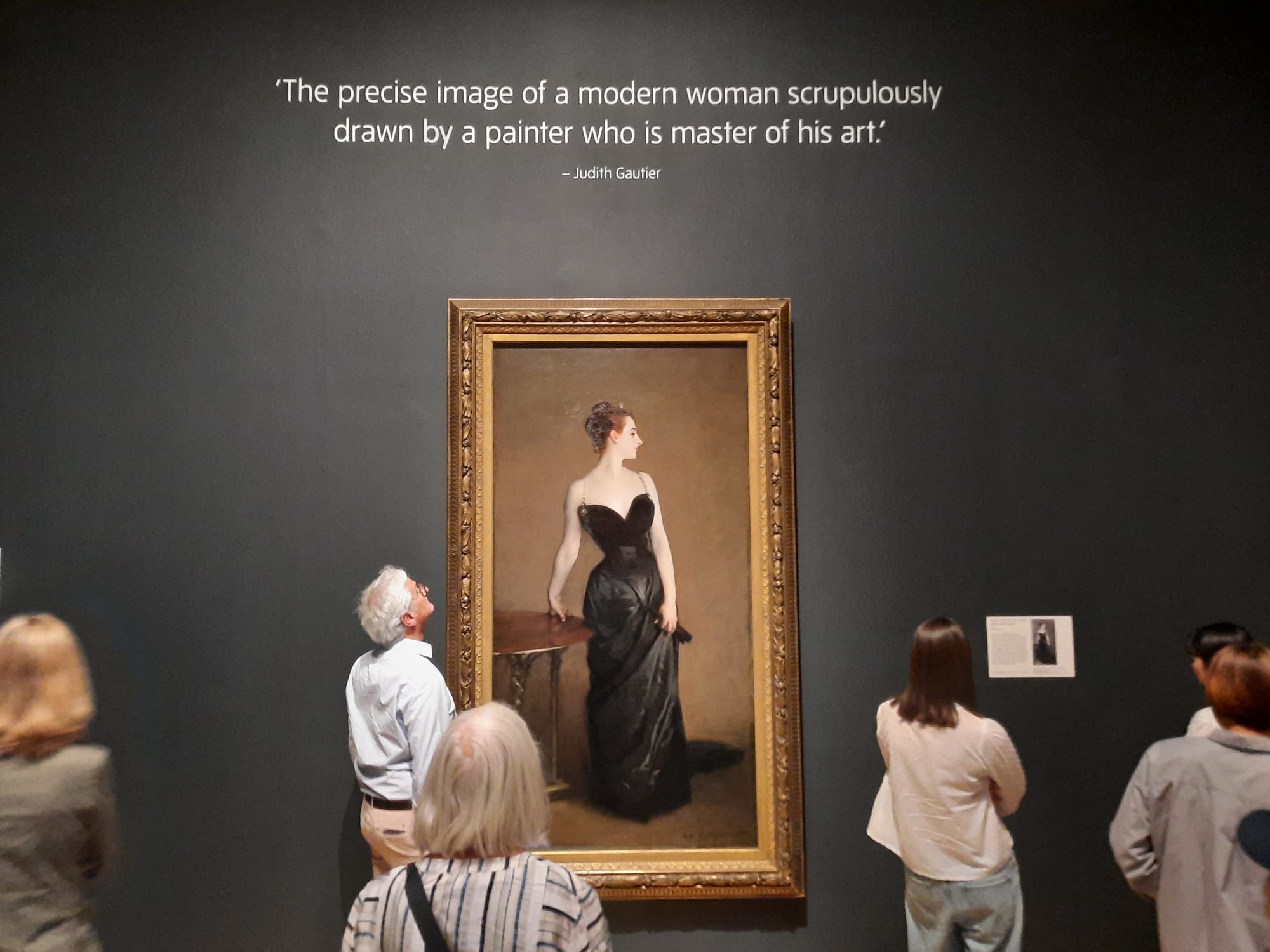Sargent And Fashion – Tate Britain, London (LAST CHANCE TO SEE)
There is an interesting idea at the heart of Tate Britain‘s Sargent and Fashion, but it’s easy to lose sight of in this over-expansive and somewhat diluted exhibition.
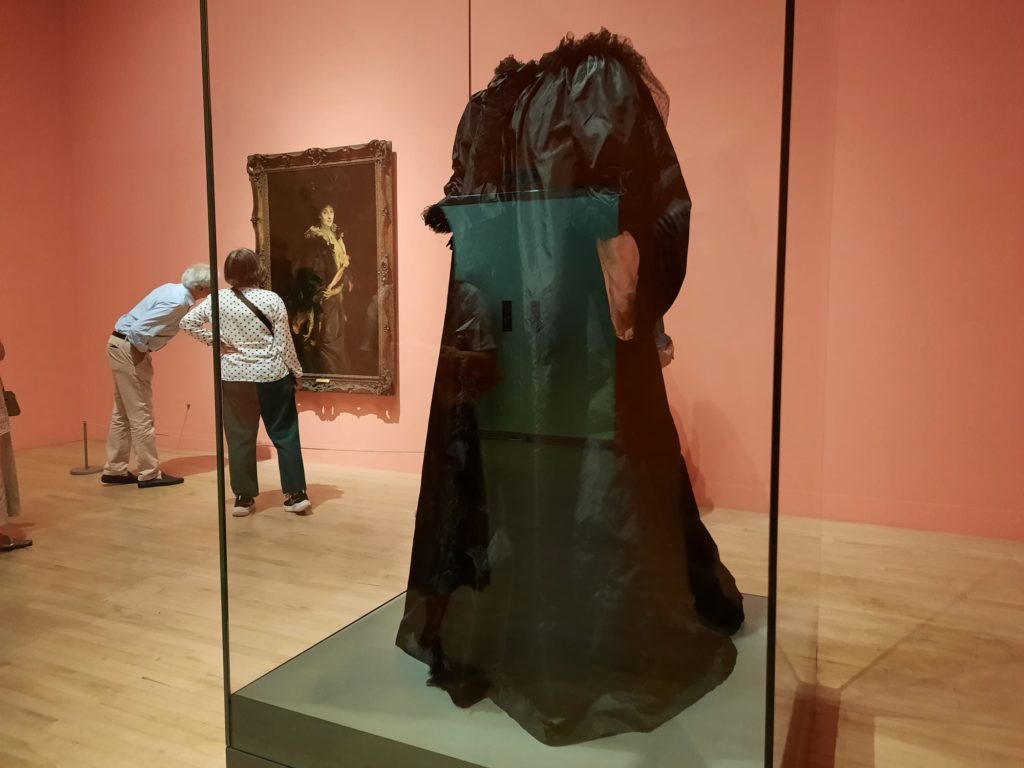
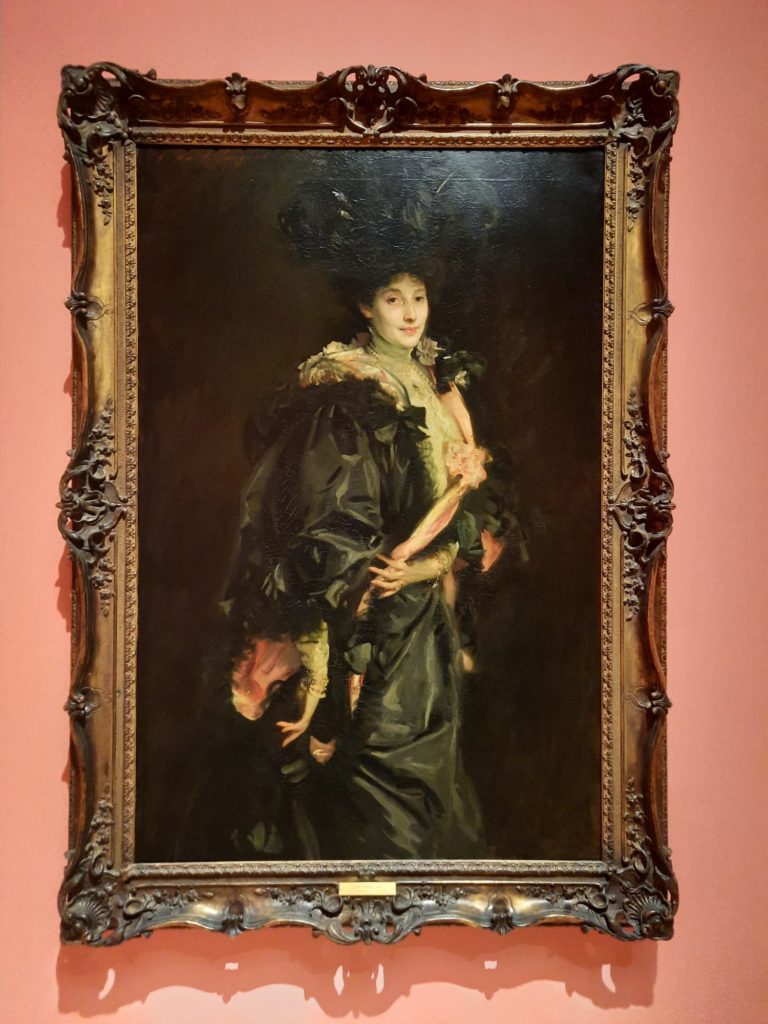
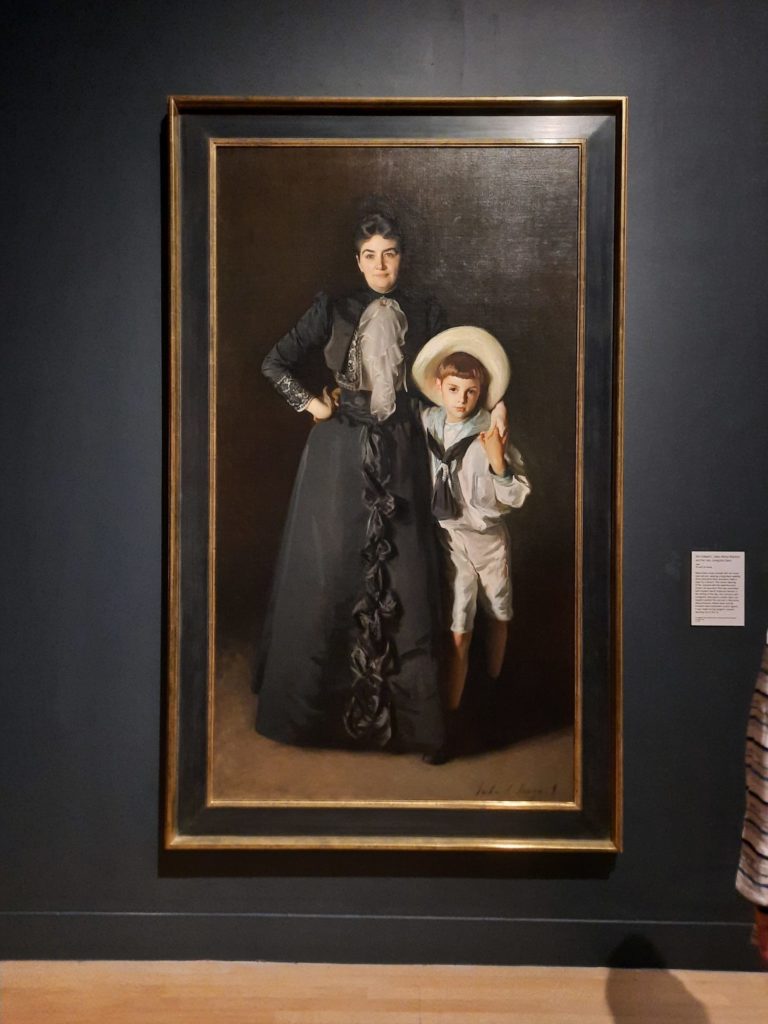
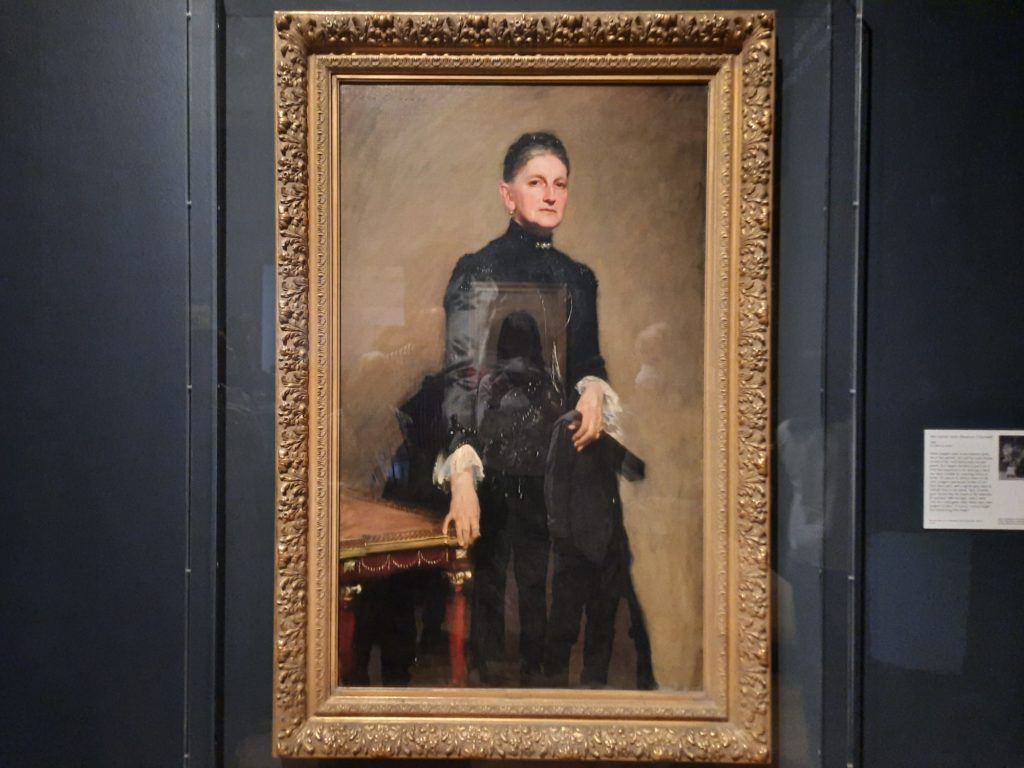
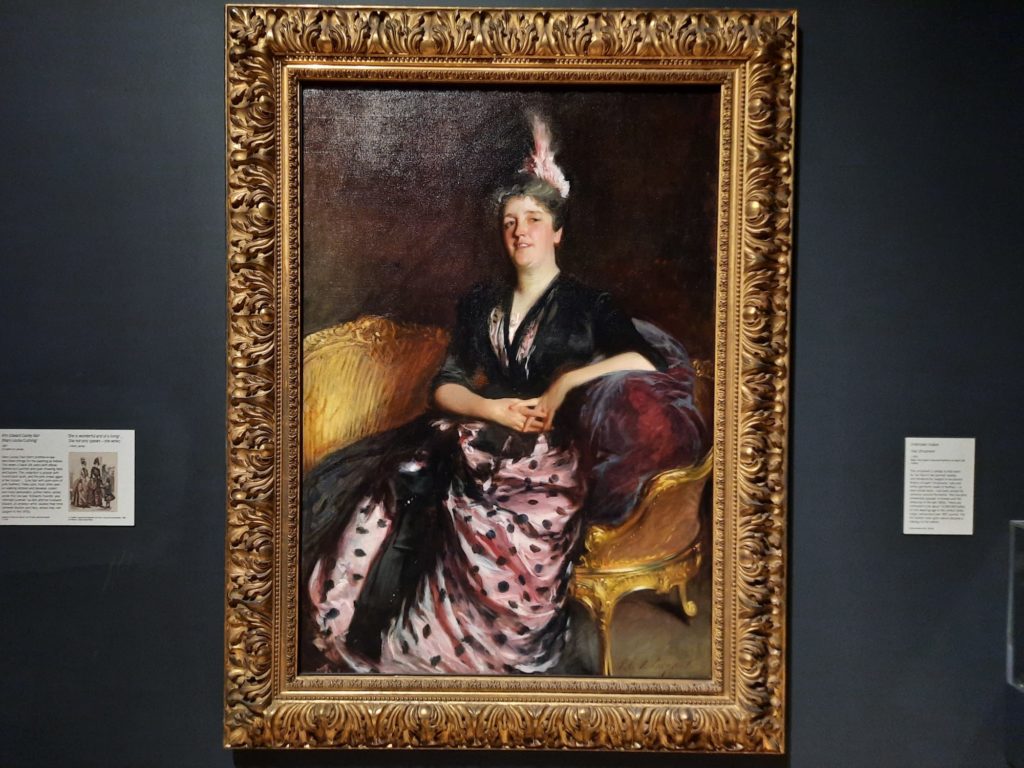
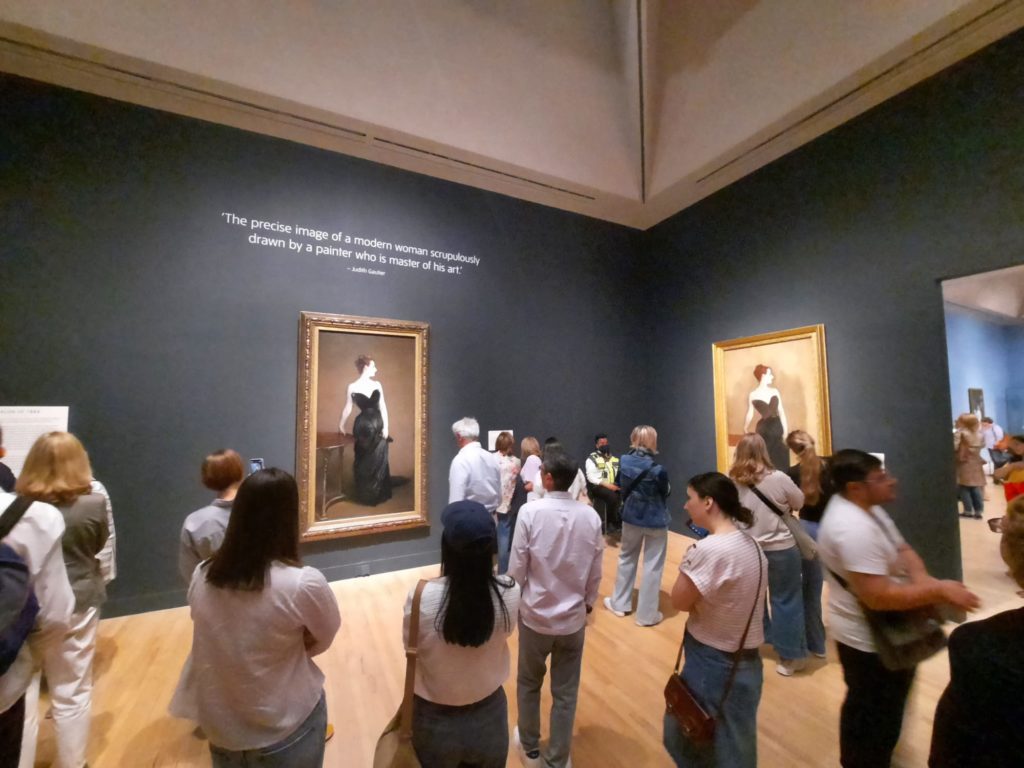
John Singer Sargent
I’ve seen one-star reviews of this exhibition, and I’ve seen five star reviews. I land somewhere in the middle. I have a few complaints, but overall I did think there was something to it. And so I’m glad that I managed to get in and see Sargent and Fashion shortly before it closes. If you want to do the same, please note you have less than a week to go.
Let’s start, as always with a bit of background. In particular on John Singer Sargent. Generally thought of as an American artist, the truth is a little more cosmopolitan. Born in Florence in 1856 to American parents, he spent most of his life in Europe. He trained in France, lived in England, was a Royal Academician and also exhibited at the Parisian Salon. He also travelled widely including around Europe, the USA and the Middle East.
Given the circles he moved in, it’s perhaps no surprise we’re about to encounter so many society portraits. He had a Bohemian upbringing: his mother was certain travelling around in Europe and visiting churches and museums would be sufficient education. Both parents had artistic talent, and encouraged the same in their son. Despite this unconventional upbringing he grew up accomplished, highly literate, cosmopolitan, and able to speak several languages. He was friends with artists like Monet, novelists like Henry James and wealthy families like the Sassoons. On professional trips to New York and Boston he painted American high society. In fact, this exhibition is co-organised with the Museum of Fine Arts in Boston.
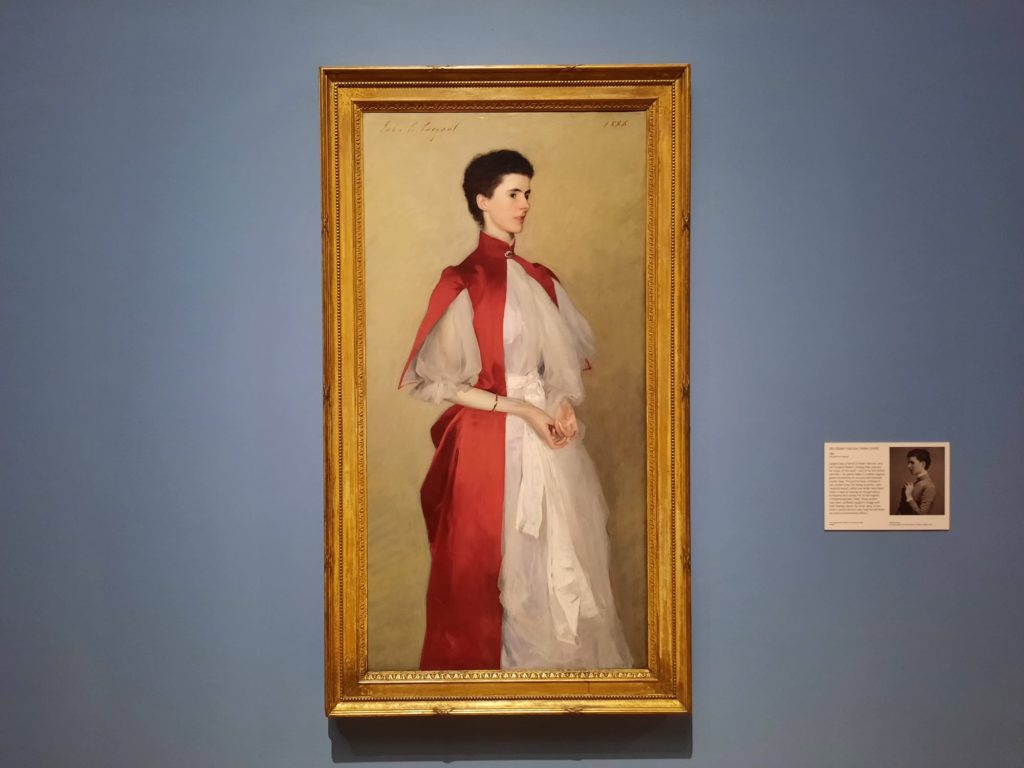
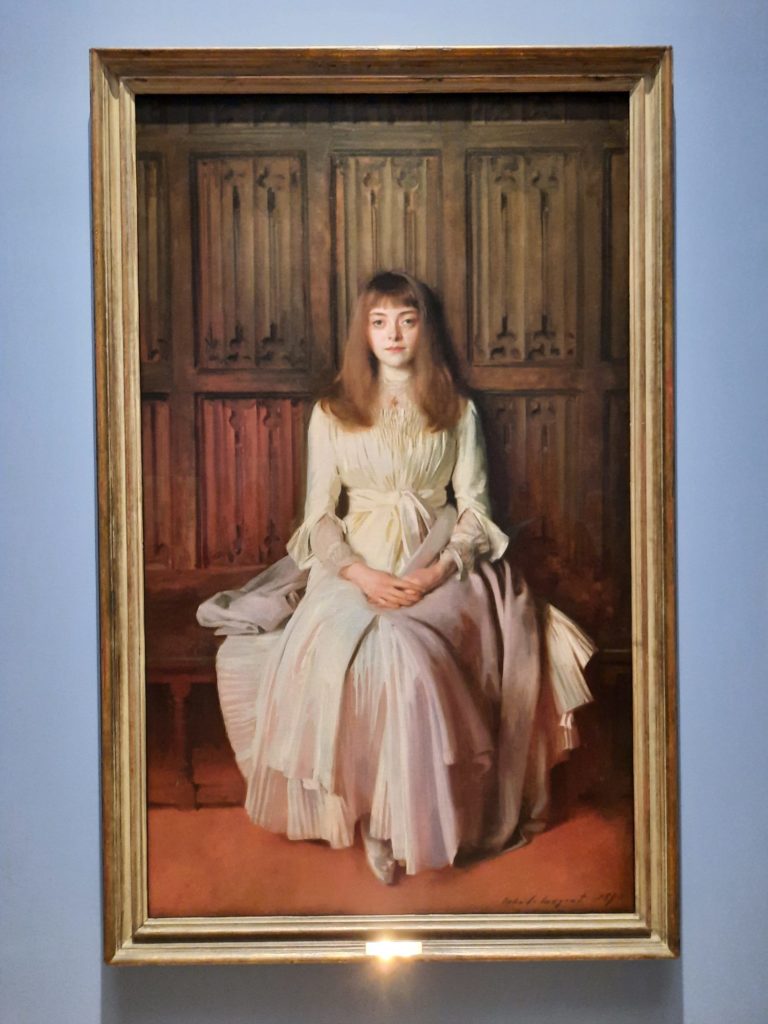
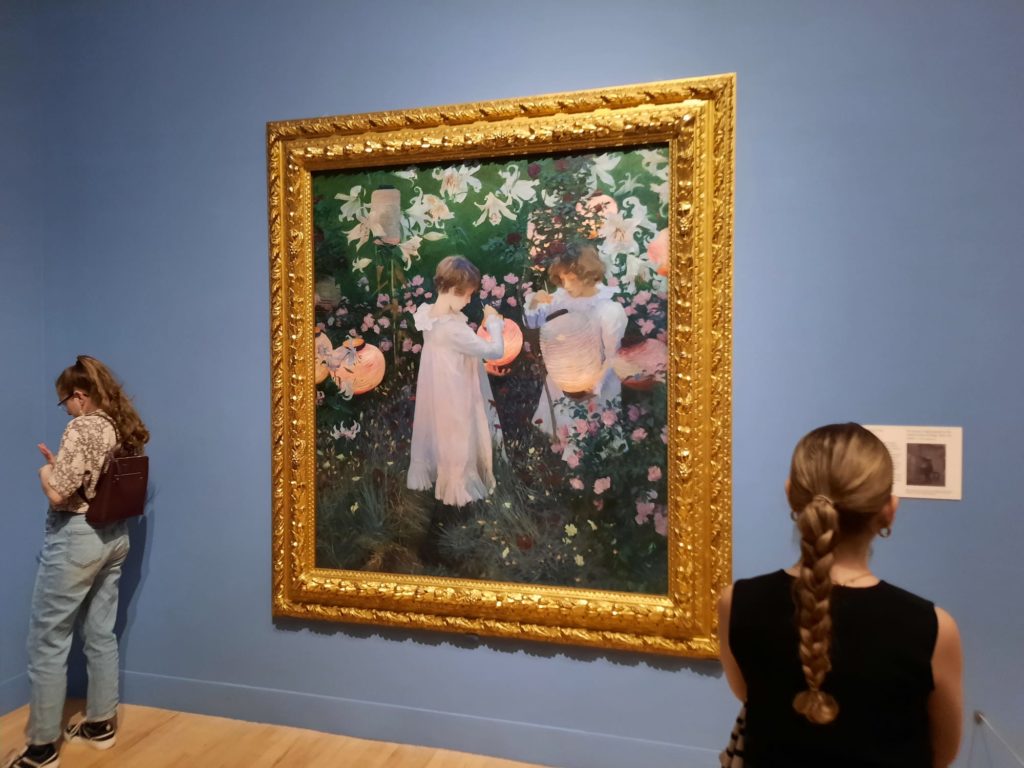
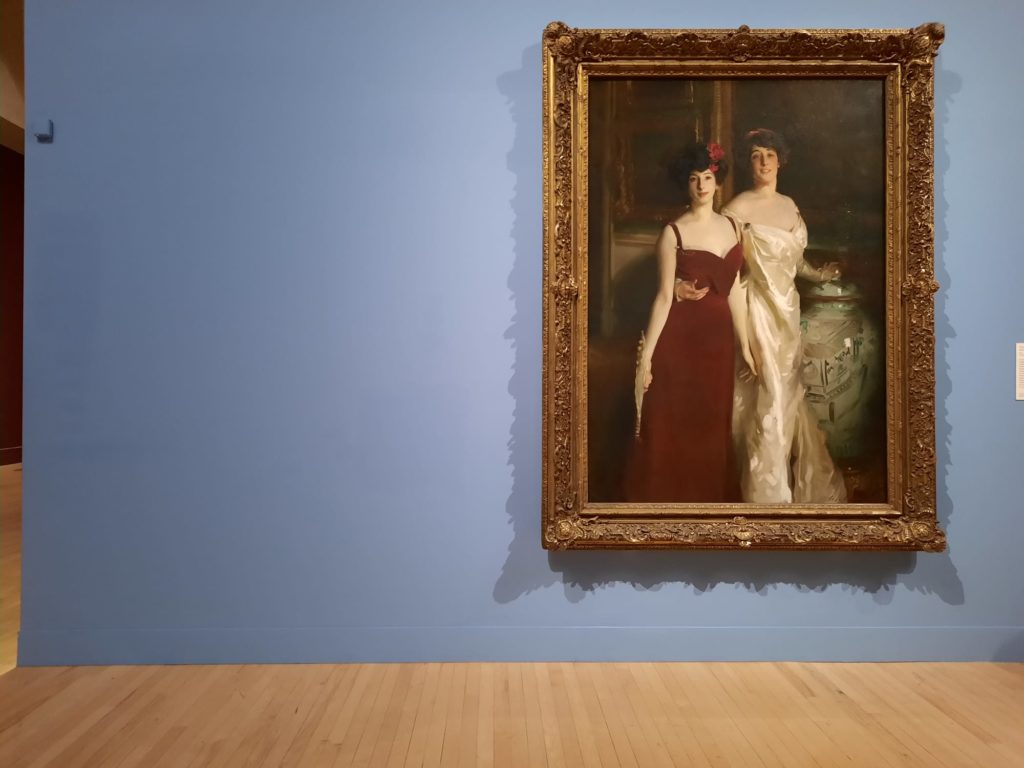
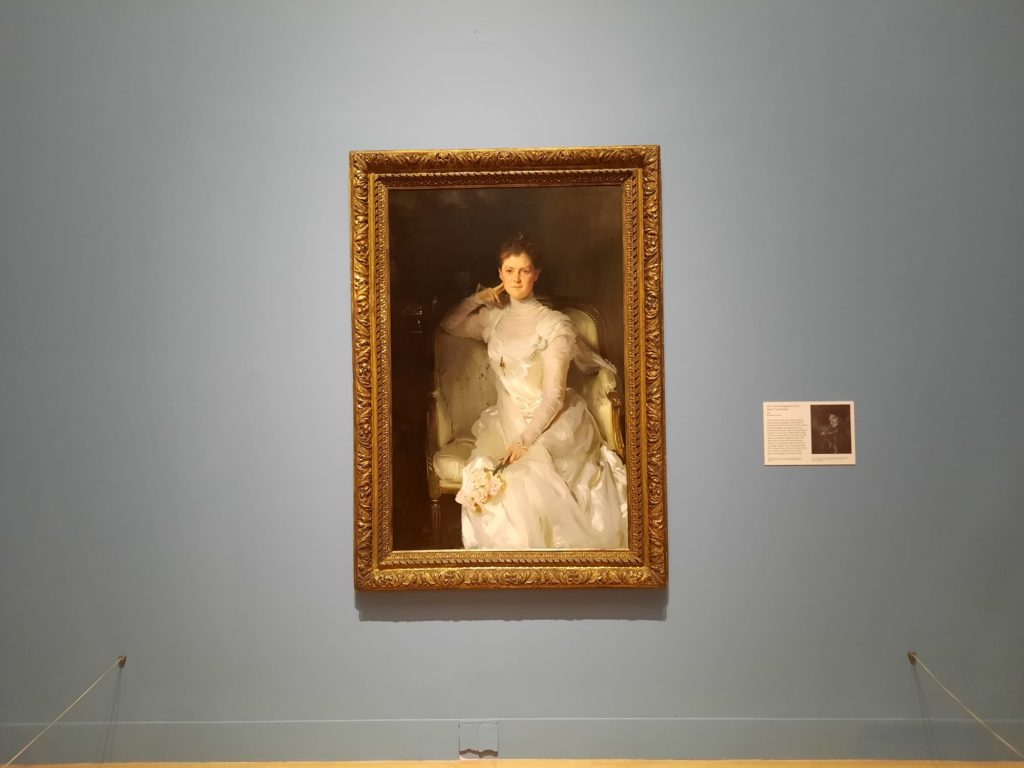
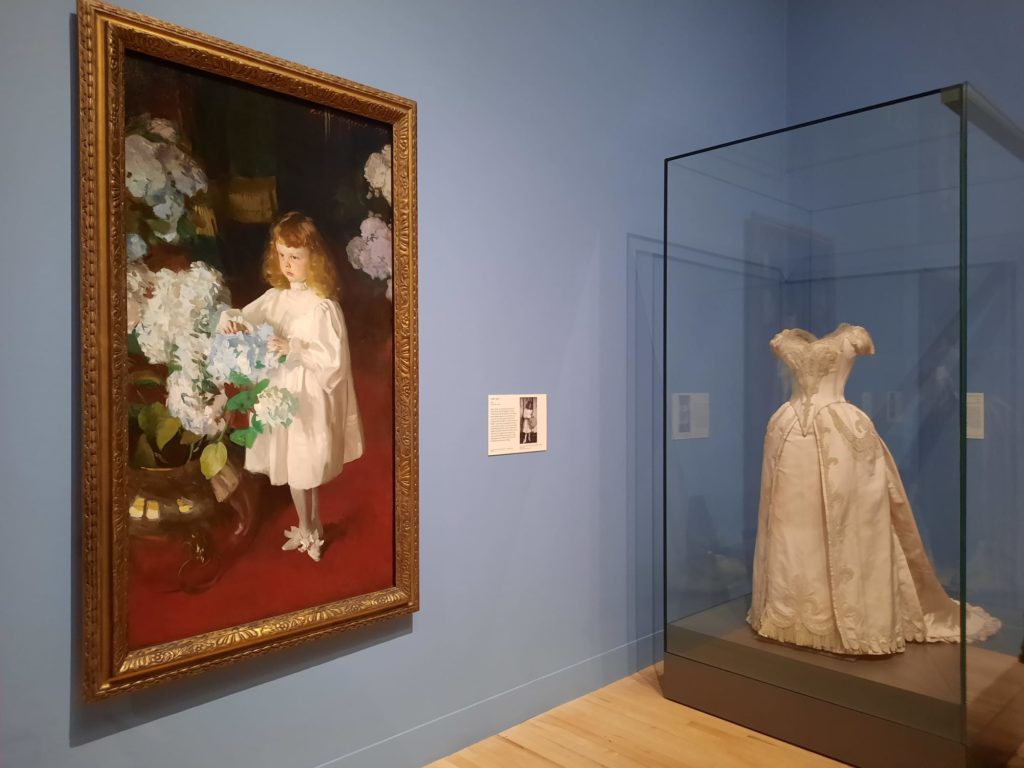
Sargent and Fashion
Let’s begin with a couple of quotes from the exhibition’s introductory text:
“In a career which coincided with the rise of haute couture, Sargent painted portraits which embraced the creative potential of clothing and costume.”
Tate Britain – Exhibition Introductory Text
“Sargent’s portraits operated in the space between the desire of his sitters and his own artistic ideals. This was a space of collaboration and sometimes of tension, revealing the distinct experiences and personalities of his sitters.”
So the thesis, to summarise, is that fashion, under Sargent’s direct influence (sometimes down to pinning outfits in place), helped to give his paintings their dynamism and life. And to make or break the sitters’ reputations. To demonstrate these points, the Tate have brought together a number of portraits, a handful of other paintings, and some examples of the fashions depicted. In some instances these are the exact items of clothing we see in the paintings. In others it’s historic comparisons.
As a thesis, it’s a little bit… inconsequential. There’s something in the way Sargent handled fabrics, fashion and clothing which tells an interesting tale, but it’s not quite the one described here. Let’s come back to that at the end of this post.
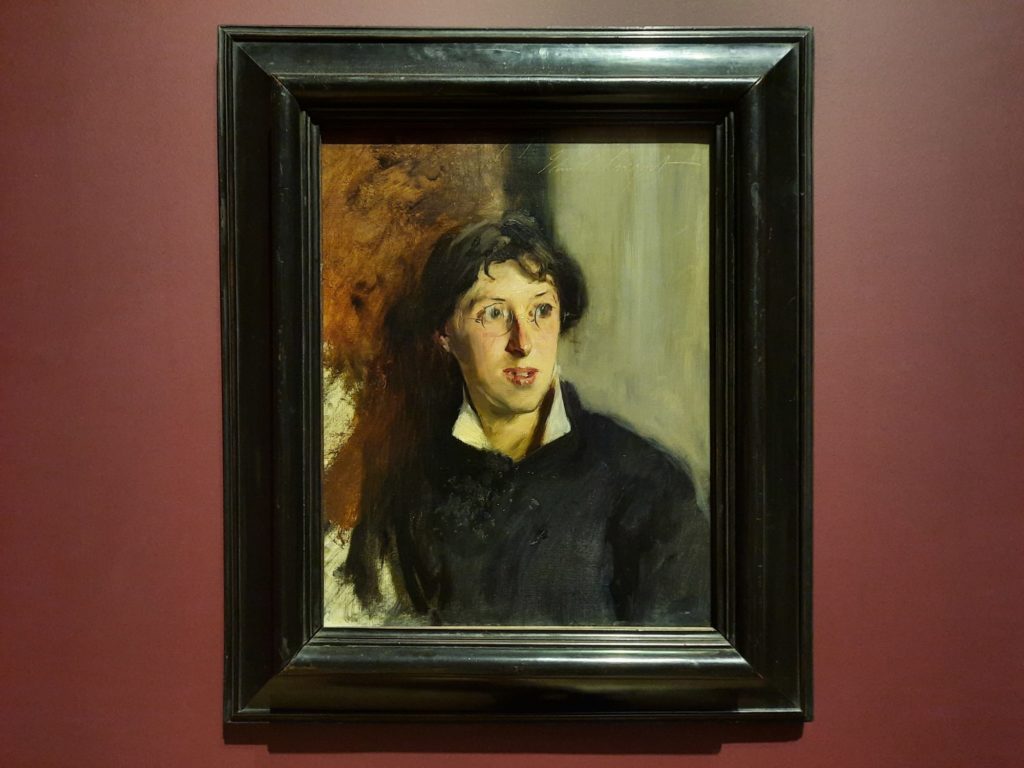
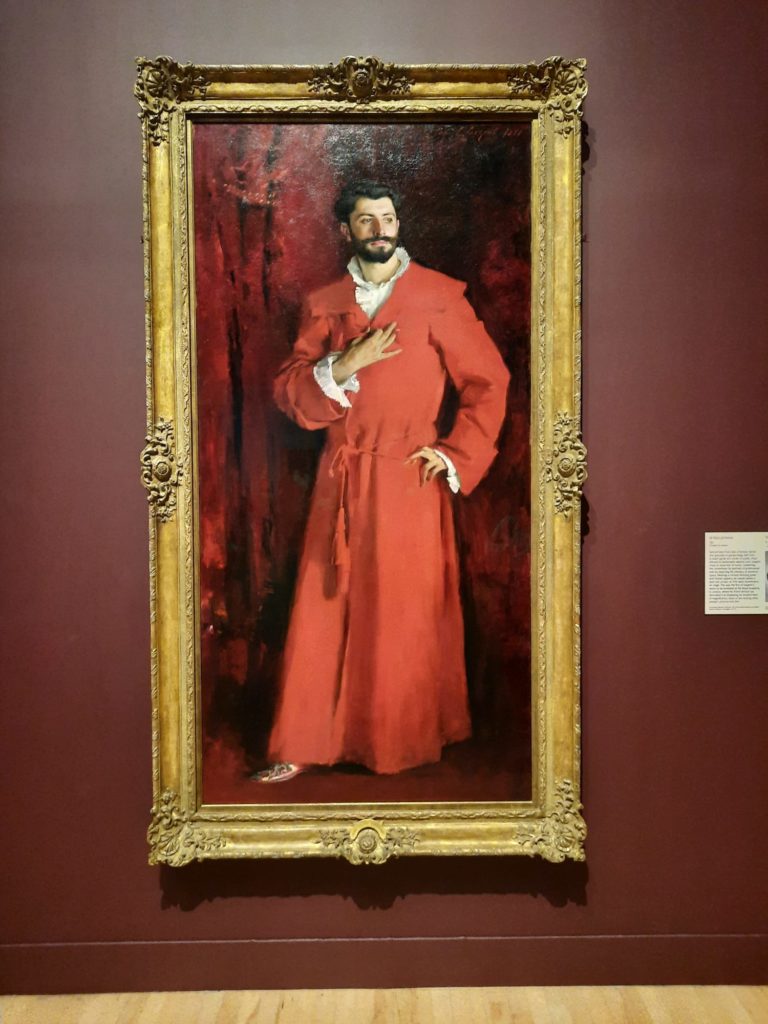
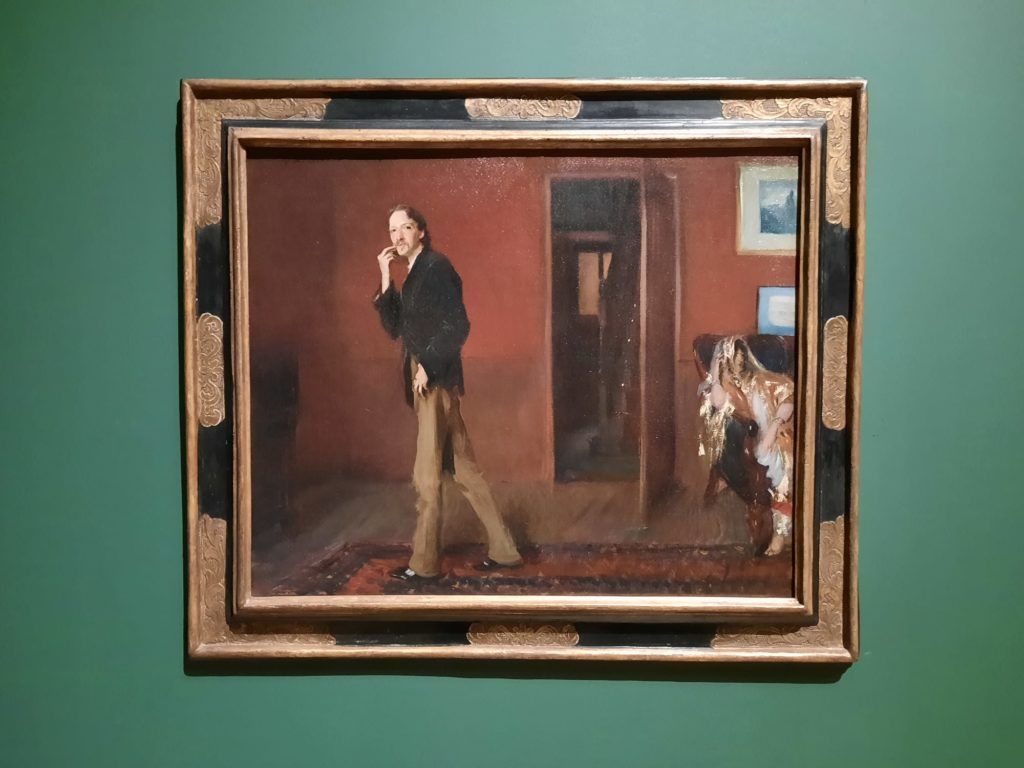
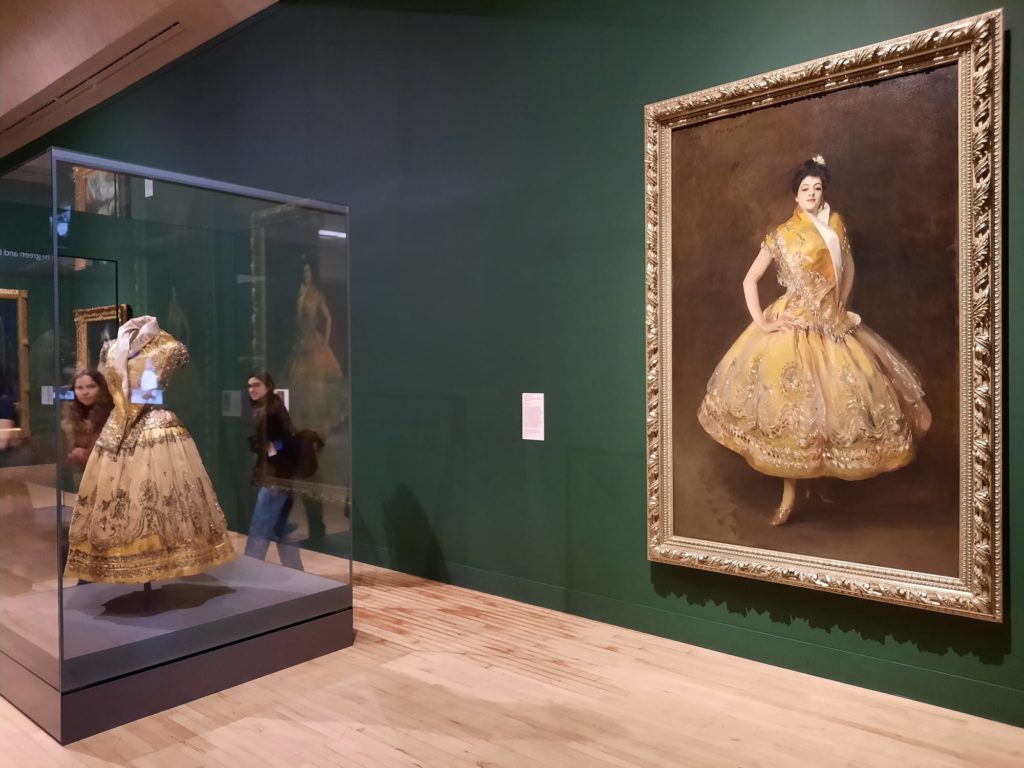
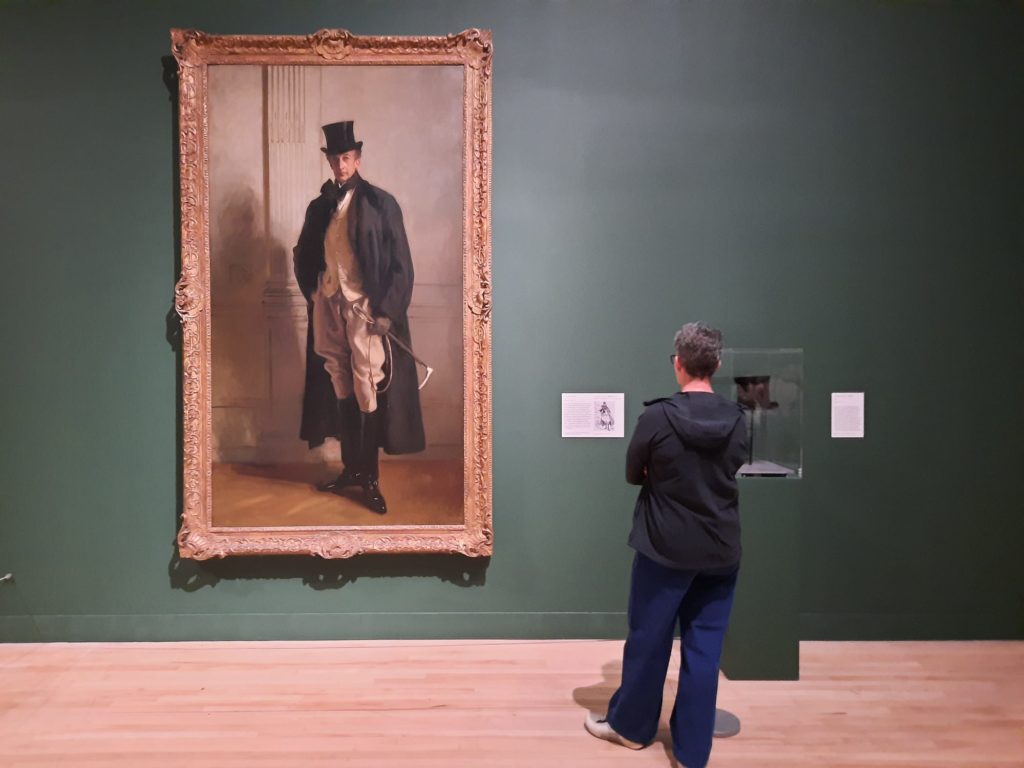
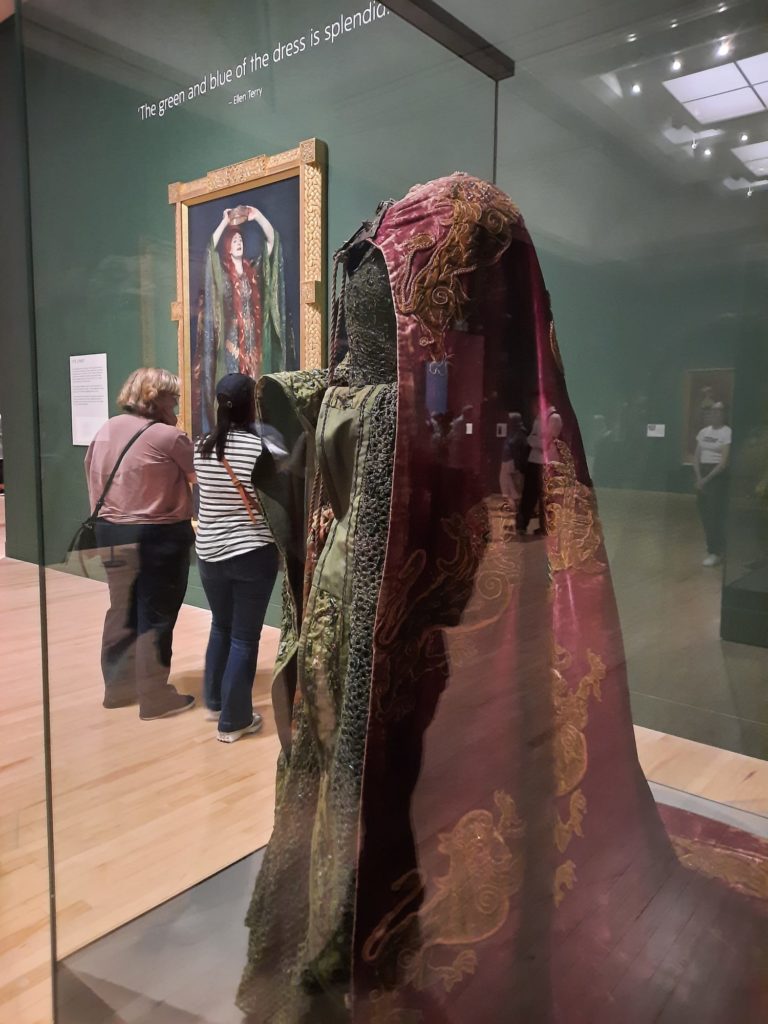
Exploring the Exhibition
One drawback I found to this exhibition, which I’ve lamented at Tate Britain before, was its size. The exhibition galleries at Tate Britain are extensive, and curators seem compelled or bound to fill them. At one point I was heard to utter “When will it end?”. Not a good sign amongst exhibition visitors. When there are so many paintings to see, and each one needs time to take in (the sitter, the clothing, the techniques, the wider context), it’s tiring and also tends to dilute any messages the exhibition is trying to convey. I think we could have lost a good two rooms of the society portraits and been none the poorer for it.
That being said, there are some fabulous loans here. The Met’s Madame X (Madame Pierre Gautreau) is on view, which in itself is worth coming to see. So if we took out some paintings there would still be a fabulous selection. It’s what’s done with the paintings that I think could do with some further refinement. Shortly after my exhausted and dramatic utterance, I found my favourite part of the exhibition. This was the second-to-last room, where Sargent was no longer painting commissions, but painting on his own terms. Here we have friends and family (his niece features a lot) in scenes which are much more Impressionistic.
And so I finally understood what the curators were trying to tell me about Sargent and Fashion: that he had an eye for the effects created by the play of light on this fabric or the lines of that cape that was beautiful and masterful. I thought back to the first room, where a rather dull looking opera cape suddenly looks bold and alluring on Sargent’s canvas. That’s why he was selecting the outfits his sitters wore and pinning them uncomfortably into place: it was about the painterly effect first and foremost, and the effect on a sitter’s reputation was secondary. Not to say unimportant, because Sargent was a businessman and needed ongoing commissions, but it’s when he’s free of those commissions that you see what really mattered to him as an artist.
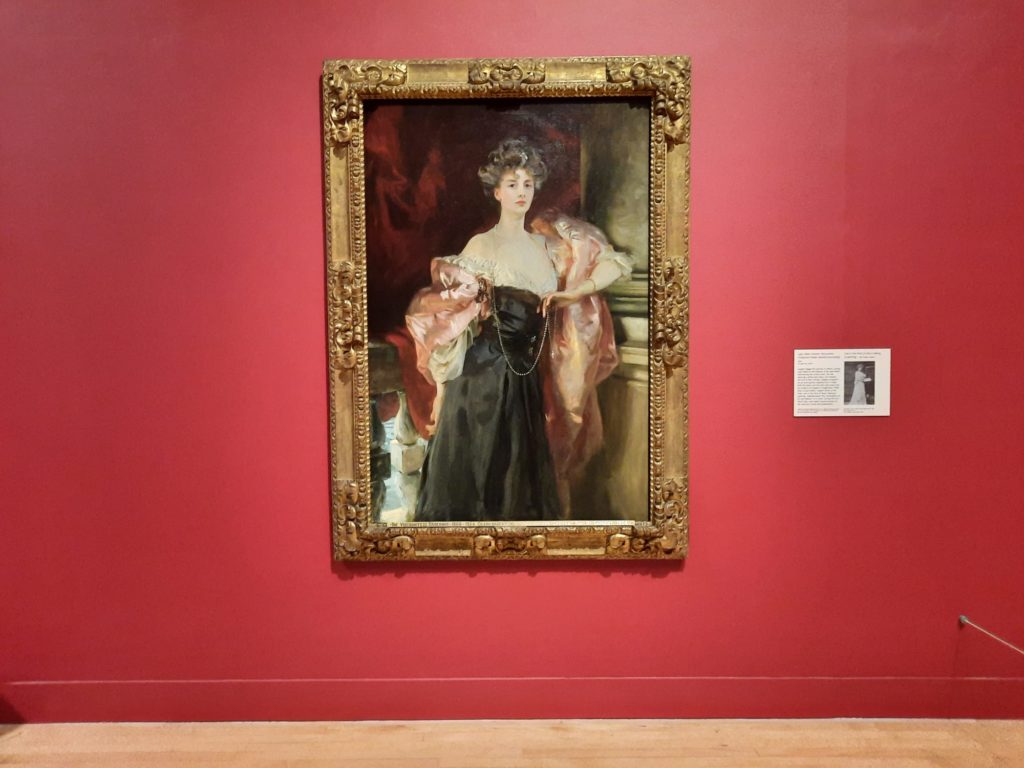
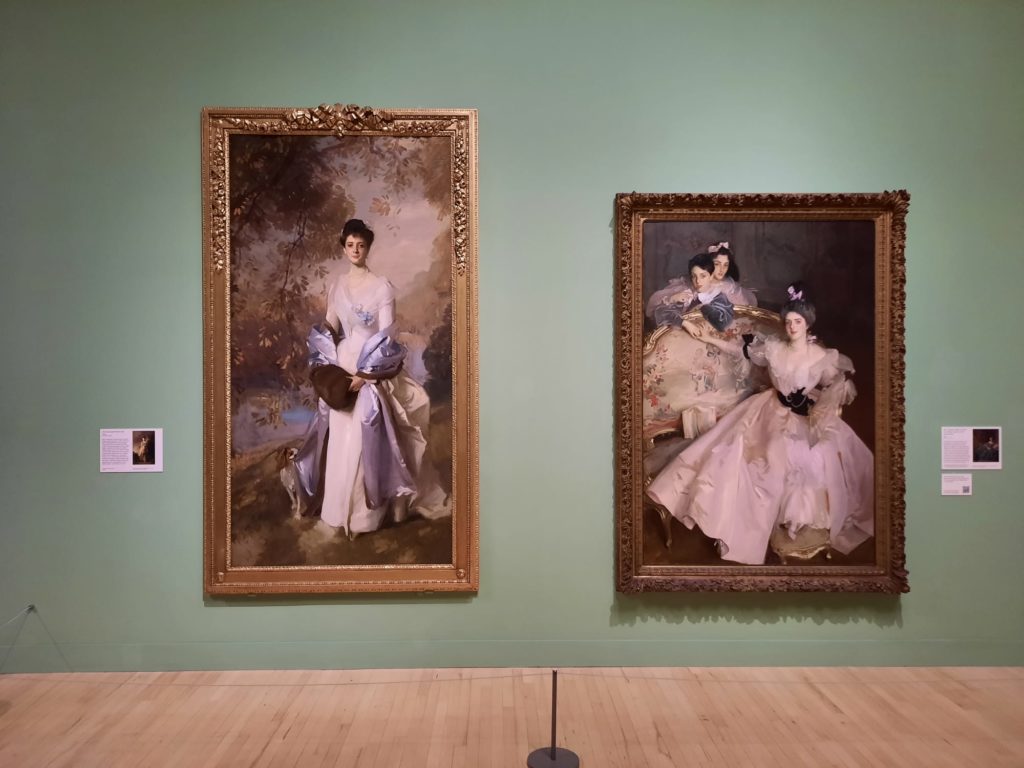
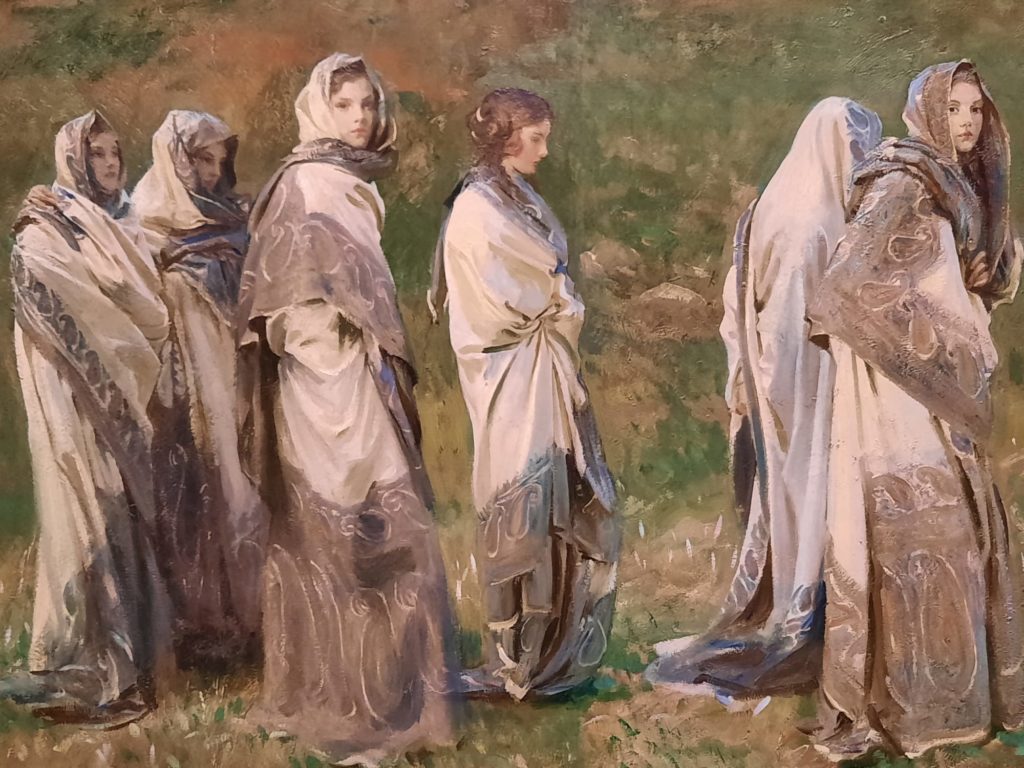
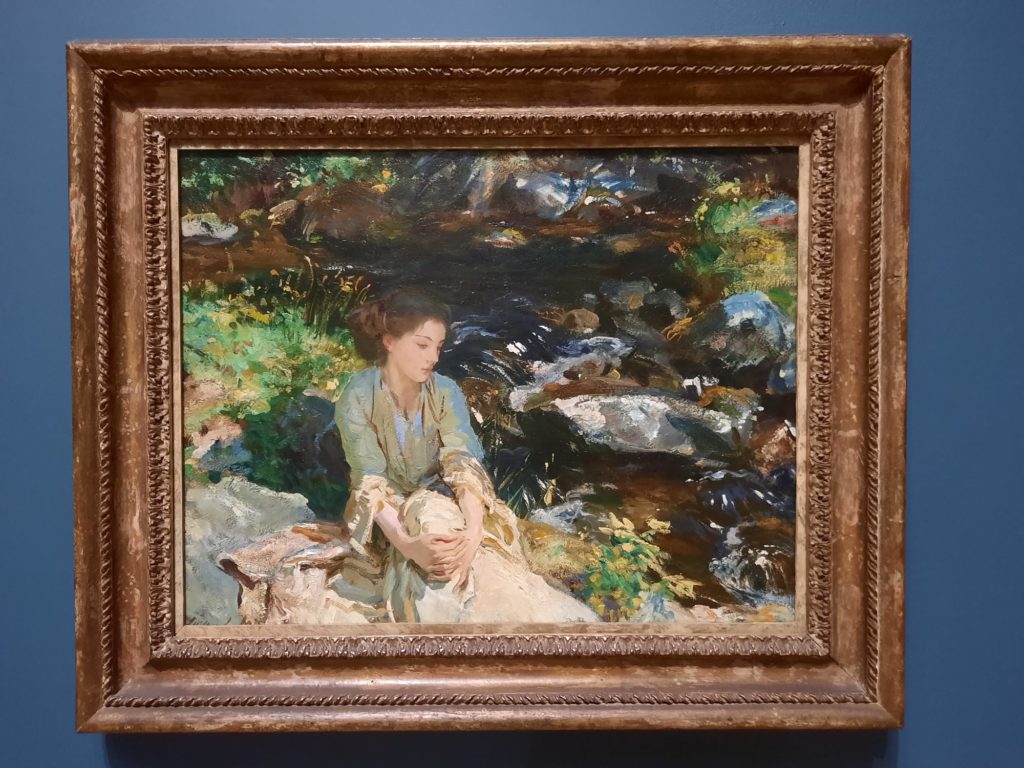
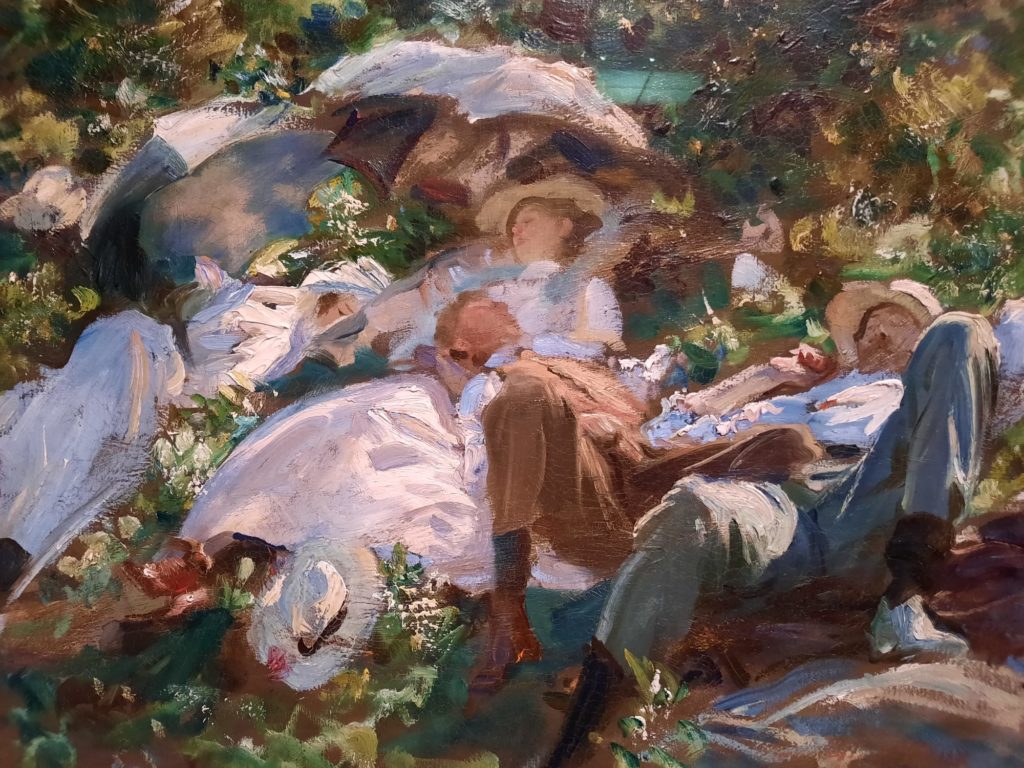
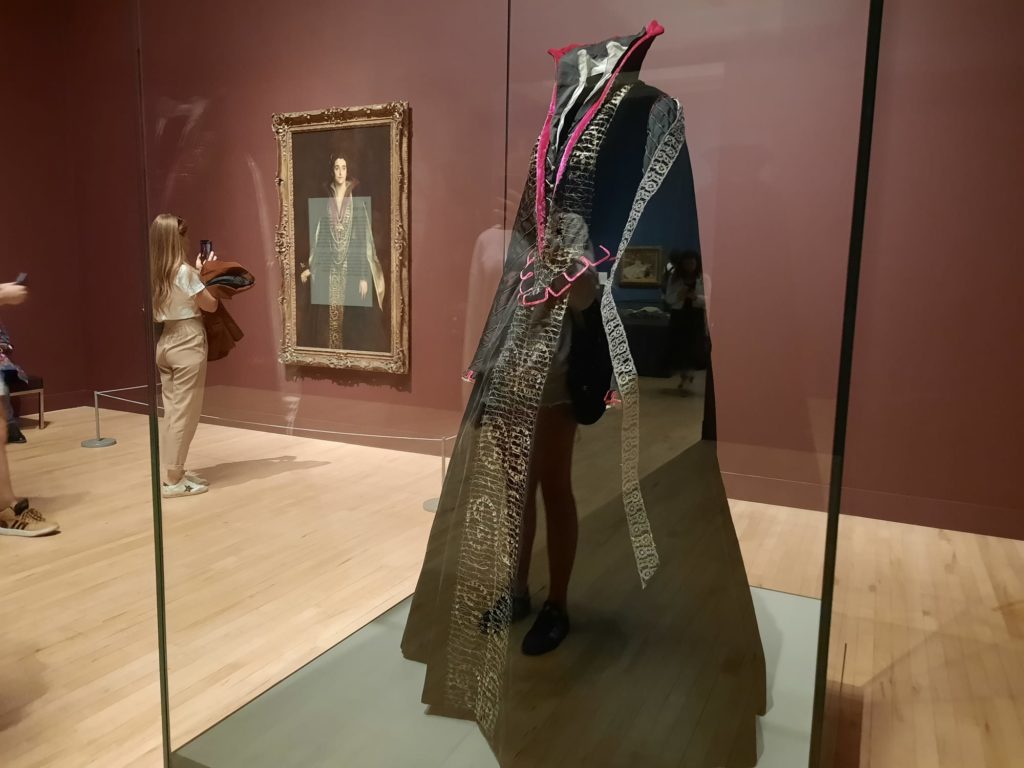
Final Thoughts on Sargent and Fashion
I wondered briefly if the version at the Museum of Fine Arts in Boston was more compelling. Fashioned by Sargent is certainly a more dynamic title. But reading a few reviews I think both versions suffered the same pitfalls. They miss the point, slightly, in focusing on the fashion rather than the art. Seeing how Sargent translated specific outfits into paint is interesting. Seeing a similar fan or hat or lace collar less so.
One further aspect of the exhibition that I found interesting and would have liked to see further developed was the echoes of art history in some of Sargent’s works. One room draws parallels between specific paintings by the likes of Gainsborough, Boucher and Van Dyck. But once included it would have been nice to fully explore it.
If you like Sargent’s work (and I do) then this exhibition is worth seeing. Take what you will from the historic costumes on display, but really look at the fresh, modern approach he took to capturing a sitter’s likeness. Of which his treatment of their clothing was most certainly a part. It’s a shame that looking beyond the surface is largely left to the viewer rather than explored within the exhibition itself.
Salterton Arts Review’s rating: 2.5/5
Sargent and Fashion on until 7 July 2024
Trending
If you see this after your page is loaded completely, leafletJS files are missing.

